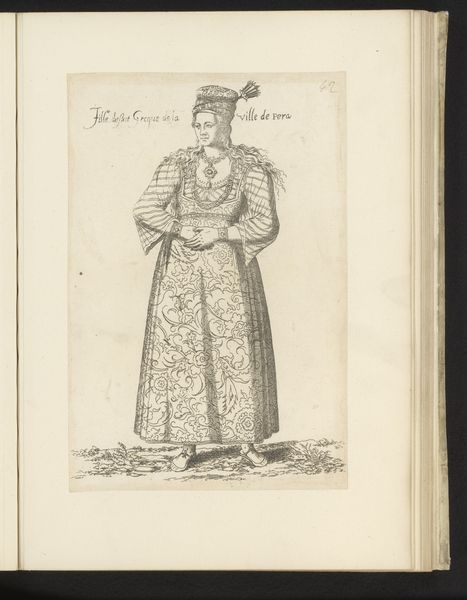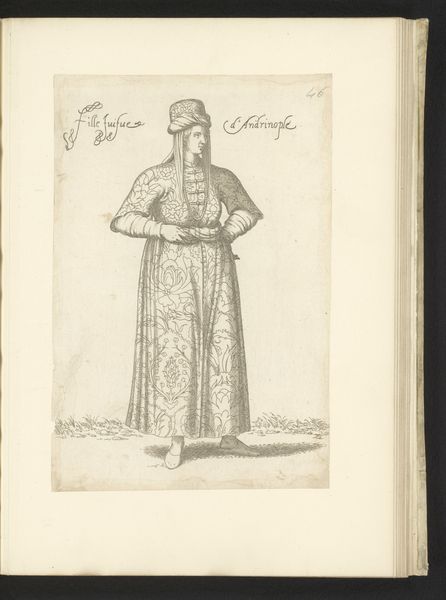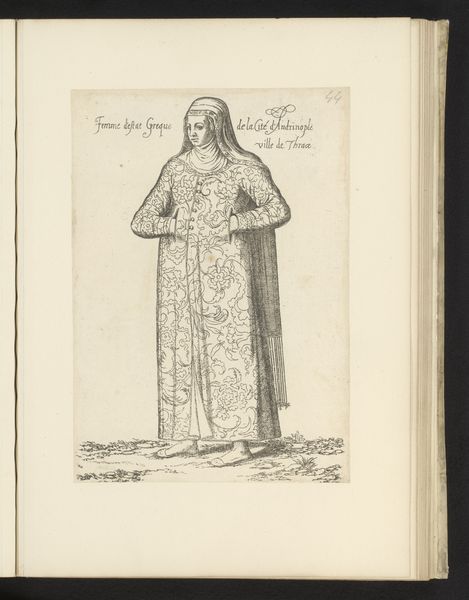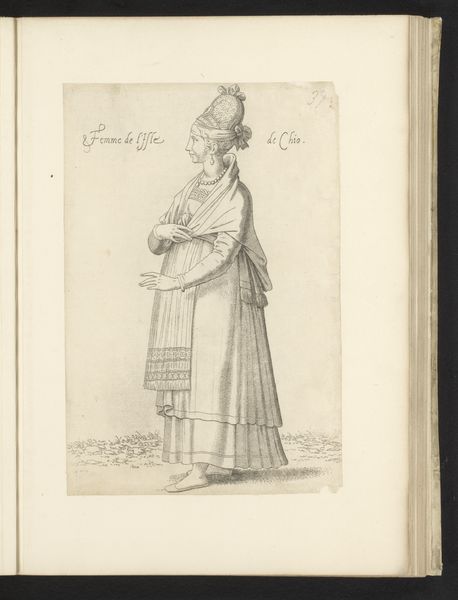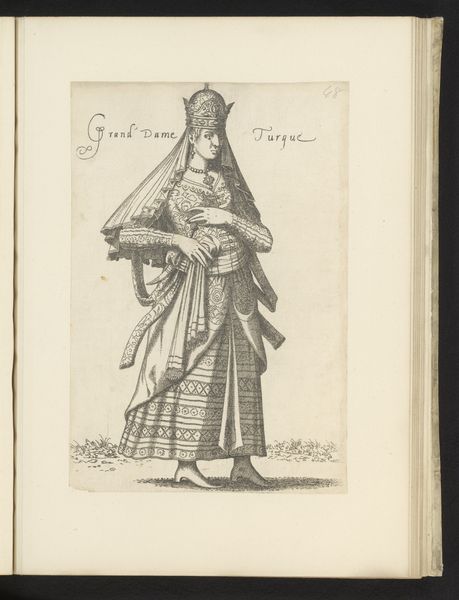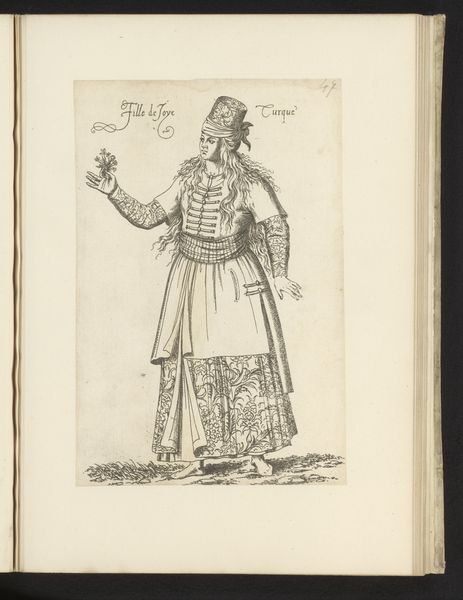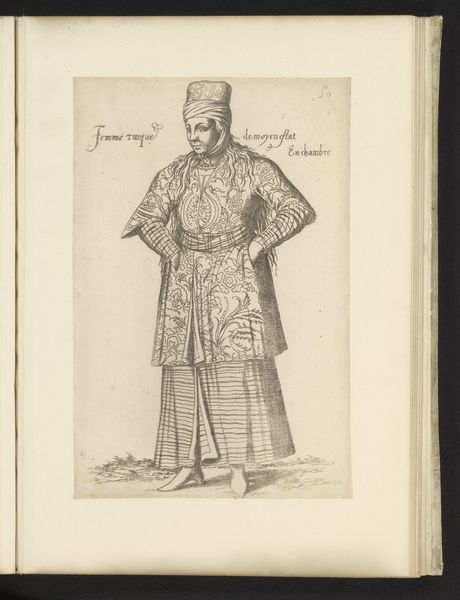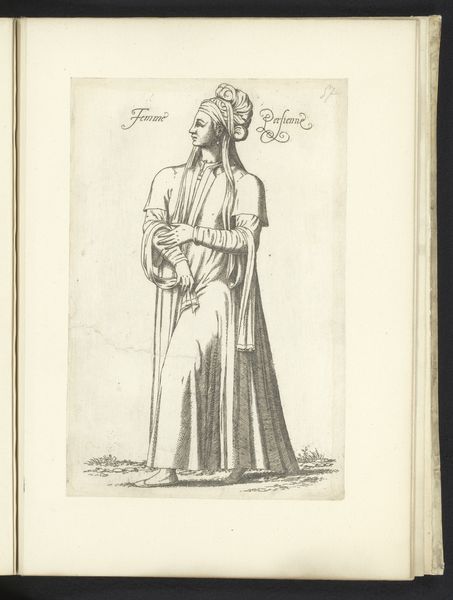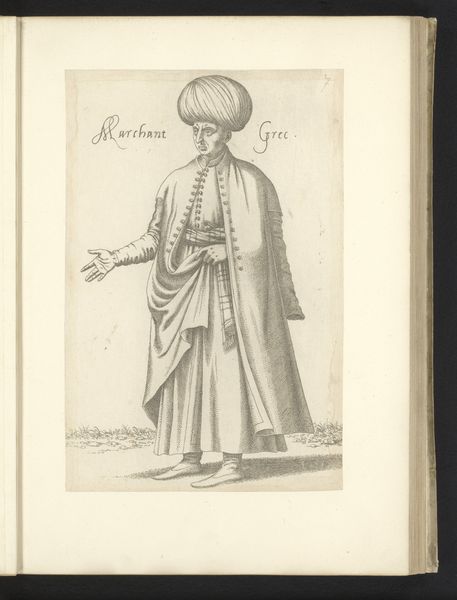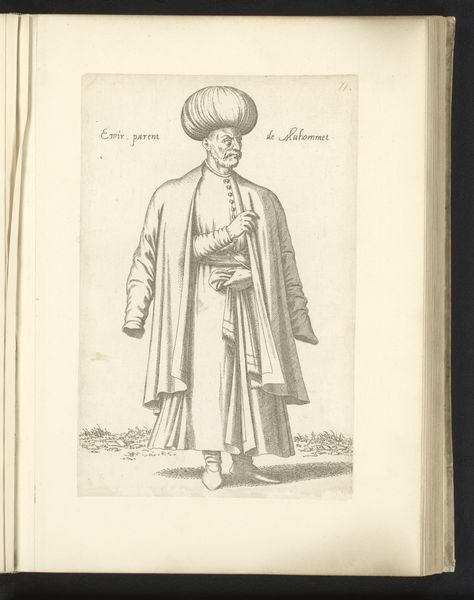
drawing, print, engraving
#
portrait
#
drawing
# print
#
figuration
#
11_renaissance
#
history-painting
#
northern-renaissance
#
engraving
Dimensions: height 272 mm, width 173 mm
Copyright: Rijks Museum: Open Domain
Editor: So, here we have Léon Davent's "Turkse vrouw," made sometime between 1555 and 1568. It's an engraving, so a print, which I find fascinating. What strikes me is how detailed and almost…curious it feels. I mean, she is wearing shoes that are like architectural pedestals. What do you make of it? Curator: You know, sometimes I feel like these prints are secret little windows into another time. This "Turkish Woman," isn't just a portrait. It's a statement about how cultures saw each other, the little details they focused on—look at those shoes! Davent wants us to see the “exotic” and he does it so expertly. Don't you think? Editor: Definitely, but it's also interesting what he *doesn't* show. We don’t see a specific context. She's just...there. So, what do you make of that stylistic choice, to have the background virtually empty? Curator: I find that intriguing, too. It’s as though he wants us to fill in the blanks. He gives us the "what," her dress, the stance, but leaves the "where" and "why" to our imagination. He’s selling the image, more than the reality of the woman herself. How do you think this affects our perception of her? Editor: It makes her feel almost… like a costume, or a character in a play, rather than a real person. Curator: Precisely! He is presenting her. Maybe these artists had no way of knowing just how well preserved their vision of people would endure centuries later, through their craft. It gives one pause, no? Editor: Totally. It's amazing how much you can unpack from just one image. I'll definitely look at prints differently now. Curator: Absolutely, my friend. Every little line tells a story if we are keen enough to observe!
Comments
No comments
Be the first to comment and join the conversation on the ultimate creative platform.

